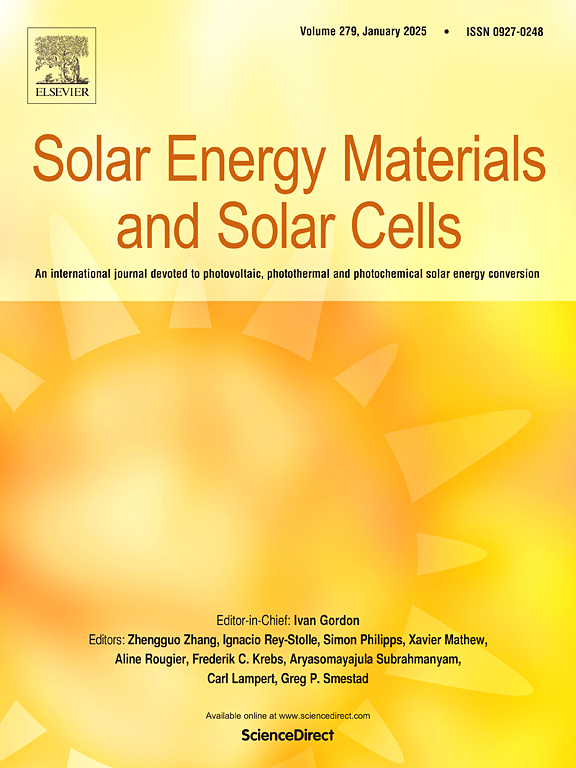Improvement of crystal-melt interface and reducing dislocation density of casting quasi-single crystalline silicon ingots using a novel thermal field
IF 6.3
2区 材料科学
Q2 ENERGY & FUELS
引用次数: 0
Abstract
The casting of quasi-single crystalline silicon (QSC-Si) is a technology with great potential for producing high-quality and low-cost crystals in the photovoltaic market. In this paper, we propose a new circular rotating thermal field structure in an industrial directional solidification (DS) furnace. The influence of crucible rotation speed on melt flow, thermal gradient, and crystal-melt interface was first investigated by using a global three-dimensional (3D) computational fluid dynamics model. Then the corresponding QSC-Si growth experiments in the rotating DS furnace were also carried out to obtain high-quality silicon ingots and verify the numerical model. The results show that the maximum deflection of 3D crystal-melt interface decreases from 19.0 mm to about 2.0 mm when the rotational speed increases from 0 rpm to 0.7 rpm. A higher rotational speed is beneficial for obtaining an almost highly flat and symmetrical 3D crystal-melt interface deflection in the rotating DS furnace due to a more uniform thermal gradient within the silicon region. However, the maximum crucible rotation speed should be restricted to less than 1.0 rpm since the rotating chassis has limited ability to bear the weight of the silicon feedstock. Then, the optimal crucible rotating speed with a value of 0.7 rpm was adapted to implement the QSC-Si growth experiments. The crystal quality of silicon ingots was analyzed by a photoluminescence (PL) detector. The experimental results indicate that the average percentage of dislocation defects for Ingot A (without crucible rotation speed) is 4.95 %, while that for Ingot B (with 0.7 rpm crucible rotation speed) is only 1.99 %. This research proposes an innovative approach for improving the uniformity of the 3D crystal-melt interface and decreasing the dislocation density in large-scale casting QSC-Si ingots.
求助全文
约1分钟内获得全文
求助全文
来源期刊

Solar Energy Materials and Solar Cells
工程技术-材料科学:综合
CiteScore
12.60
自引率
11.60%
发文量
513
审稿时长
47 days
期刊介绍:
Solar Energy Materials & Solar Cells is intended as a vehicle for the dissemination of research results on materials science and technology related to photovoltaic, photothermal and photoelectrochemical solar energy conversion. Materials science is taken in the broadest possible sense and encompasses physics, chemistry, optics, materials fabrication and analysis for all types of materials.
 求助内容:
求助内容: 应助结果提醒方式:
应助结果提醒方式:


